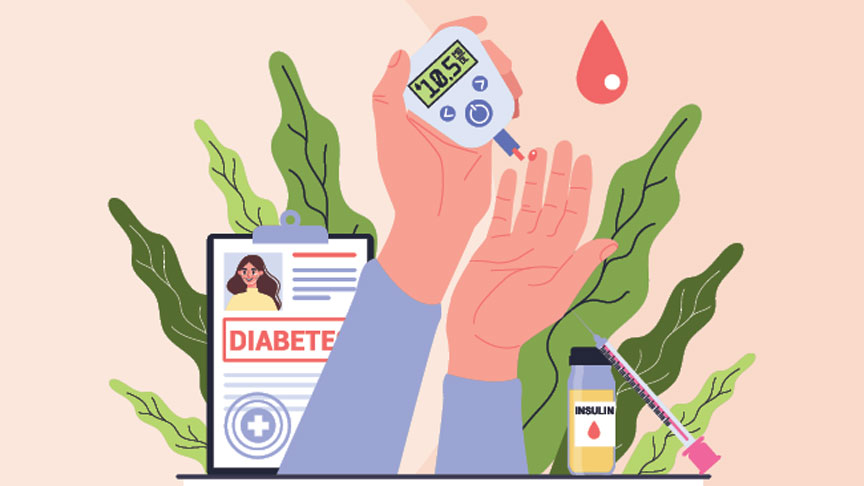
Did you know almost 300 Australians are diagnosed with diabetes every day?
National Diabetes Week is held annually from 14 to 20 July and the theme for 2019, ‘It’s About Time’, is raising awareness of the signs and symptoms of diabetes to increase earlier detection and promote action.
Diabetes is a serious condition where there is too much glucose in the blood. It is a medical condition that does not discriminate. There are approximately 1.7 million Australians living with diabetes. However, of this high figure, there is estimated 500,000 people living with undiagnosed diabetes.
Type one diabetes is a life-long autoimmune condition that is generally diagnosed in childhood or early adulthood. The body’s own immune system attacks and destroys the beta cells in the pancreas that are responsible for producing insulin. As the body needs insulin to survive, people with type one diabetes must replace this insulin every day. This can occur either by insulin injections or through a pump. Type one diabetes cannot be prevented.
Type two diabetes is the most common form of diabetes. It affects approximately 85 to 90 per cent of all people living with diabetes. Type two diabetes means the body still produces some insulin, but it may not be enough to keep blood glucose levels within a healthy range.
Good news! Type two diabetes can be treated with lifestyle modifications such as healthy eating and exercise.
Signs and symptoms of diabetes
- Excessive thirst and hunger
- Frequent urination, particularly at night
- Weight loss or gain
- Fatigue
- Irritability
- Blurred vision
- Slow-healing wounds
- Nausea
- Mood swings
- Skin infections
- Tingling or numbness in the hands or feet
You can have diabetes and have no symptoms. In some instances, symptoms go unnoticed as they are often associated with being stressed, tired or part of ageing.
What can you do to prevent type two diabetes?
As mentioned there is no cure for type one diabetes. However, there are many proactive lifestyle changes that can be followed to prevent or delay type two diabetes.
- Maintaining a healthy weight through diet and regular exercise
- Reduce your sugar intake
- Ensure you are getting enough sleep, 7-8 hours is recommended
- Managing blood pressure
- Managing cholesterol levels
- Quit smoking
Darling Downs Health provides patients and community members with an extensive range of medical information for diabetes. Visit our incredible online resource, www.diabeteshub.com.au –which provides advice to those living with diabetes and how loved ones can help someone with diabetes.
On this website you will also find the Wellness Seminar Series by Darling Downs Clinical Director Dr Shelia Cook. Her seminars focus on the health benefits of a low carbohydrate diet in type one diabetes and prevention and management of chronic diseases.
Are you concerned you may have diabetes?
If you are experiencing any of the signs and symptoms outlined, or concerned for your overall health, below is a list of medical resources to help.
- Visit your local GP
- Call Diabetes Queensland on 1800 177 005
- Visit Diabetes Australia on www.diabetesaustralia.com.au
- Visit our Diabetes Hub www.diabeteshub.com
Diabetes is a serious health condition that left untreated, can lead to further medical complications such as heart attack, stroke, kidney disease, limb amputation, depression, anxiety and blindness.
If you are wishing to start being proactive about your health and wellness to prevent type two diabetes, head on over to our Health and Wellness Centre! Located at Baillie Henderson Hospital our Aquatic Centre features a 25-metre heated pool, change rooms and showers for public use. Visit our Baillie Henderson Aquatic Centre webpage for more information.